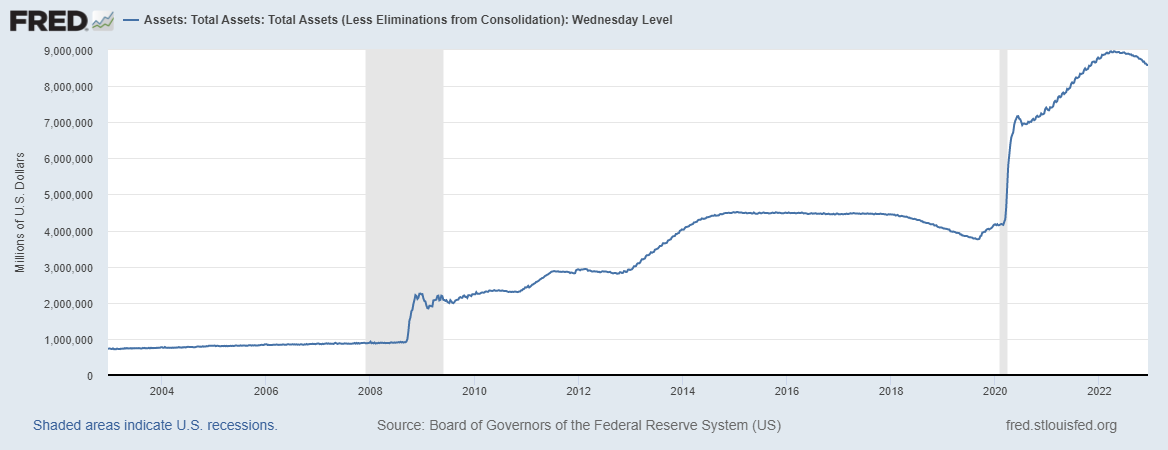Who would believe we have made it this far?
6 months of official Quantitative Tightening (QT) has passed. The Fed has been doing what they said they would do (i.e., their actions, not results).
The asset reduction for the month of November was almost $80 billion. From Nov. 2 – 30, the US Treasury (UST) balance decreased by roughly $60 billion and Mortgage-Backed Security (MBS) balance decreased by roughly $20 billion.
After half a year the (temporary) gradual turn in the balance sheet predominately shows:

In a near perfect world there would be no Federal Reserve; while, in a less perfect one, they would exist, but neutralized from the ability to alter the money supply. But this is not that world and $8 trillion was released into it, weakening the dollar, making assets more expensive while increasing the cost of living.
The most decorated mainstream PhD’s, the Nobel Prize winners, and the highly paid experts on TV will mention none of this. Real-world economic matters, the truth, neither concerns them nor is part of their job description. They’ll call it “QE” or “stimulus,” while trying to rationalize the Fed’s government enforced monopoly of their currency. As for the cause of booms and busts, they’ll find every other reason to blame except the Fed.
The process of minting trillion of dollars normally proves to be a lucrative endeavor for central banks. However, you get the odd time, such as this year, when they start decreasing their balance sheet. Amounts owed to the Fed are paid back from the system and the Fed deletes some of this money. The Fed buys less securities (debt), interest rates go up, yield curve inverts and as they say: “the fix is in.”
Yet, even the most powerful institutions in the world must face economic reality once in a while. Lo and behold, they found that when money was pumping into the system, it was much easier to turn a profit. Now with interest rates on the rise and a shrinking balance sheet, the magical Money Machine Technique doesn’t appear to work as well.
In 2022 we’ve reached a stage where the largest central banks are suffering losses. Just yesterday Alex J. Pollock and Paul H. Kupiec wrote an incredible article: Central Banks: Profligacy in Lockstep where they shared some of the losses the central banks are now carrying. The figures are staggering:
The Swiss National Bank’s (SNB) financial statements for the nine months ending September 30, 2022, show a bottom-line loss of US$150 billion.
As for the Fed:
…estimated at a remarkable $1.3 trillion loss as of October 2022. This is 30 times the Fed’s total capital of $42 billion.
Luckily, accounting tricks work much better in America. Unlike the Swiss central bank who must show the loss on their books, the Fed doesn’t. As any stock loser can attest, it’s only a loss when you sell!
So here we are. Over half a year of balance sheet reduction has occurred. Consider the swings in the stock market, the fear in the housing market, the increased debt burdens most people are facing, and large failures like FTX which continue to threaten the system. As for price deflation, no one should hold their breath on that.
The year has been incredible and still a few weeks remain. I’ll be the first to say I never believed we could make it to 6 months of QT, but surely, we can’t take another 6 more months of this… can we?

